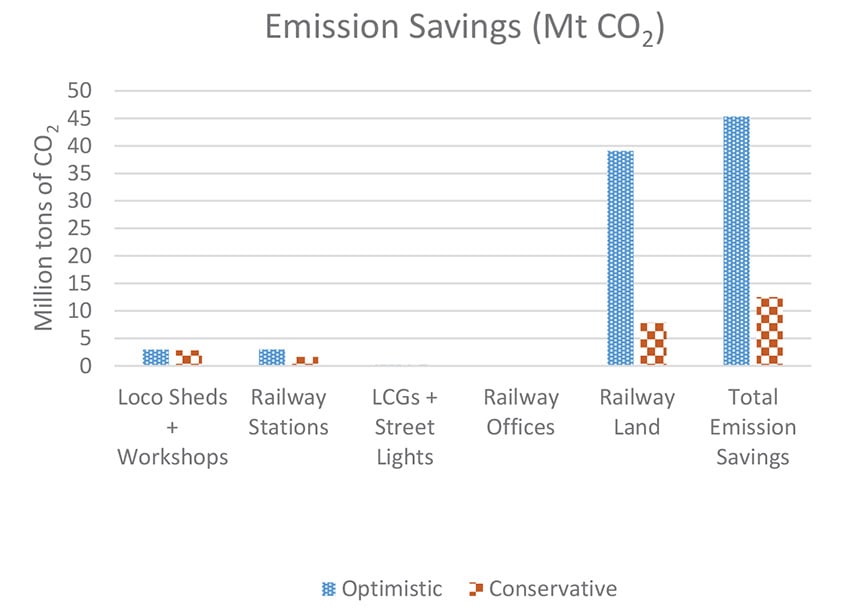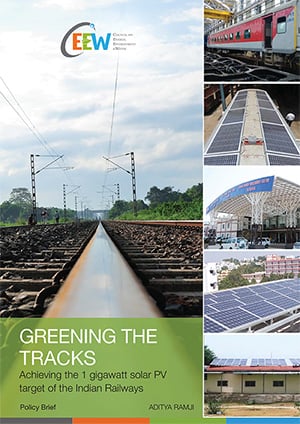



Aditya Ramji
June 2015 |
Suggested Citation: Ramji, Aditya. 2015. Greening the tracks: Achieving the 1-Gigawatt solar PV target of the Indian Railways. New Delhi: Council on Energy, Environment and Water.
The 1 GW Solar mission of railways was an initiative to establish the Indian Railways as one of the largest rail networks in the world, with a focused sustainability strategy. This study provides a techno-economic analysis to assess the potential of solar PV projects across various non-traction operations of the Indian Railways. The analysis includes diesel locomotive sheds, railway workshops, railway stations, railway offices, level crossing gates, and the use of vacant railway land.
This study is a preceding document to the policy brief, ‘Decarbonising the Indian Railways: Scaling Ambitions, Understanding Ground Realities'. It provides a summary of the feasible solar PV projects across railway workshops, diesel loco-sheds, and railway land. It also identifies key policy and regulatory challenges that developers face while supporting the Railways’ renewable energy push.

Source: CEEW analysis, 2015
The highest potential in terms of emission savings would be from the use of railway land for large solar PV, along with installations at diesel loco-sheds and railway workshops.

